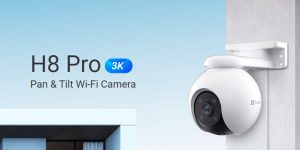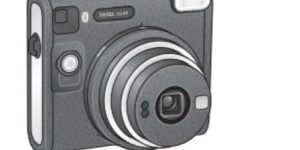
A GPS tracker designed specifically for use in harsh environments is the Spot Gen4. Because it was designed from the ground up to operate faultlessly in the roughest terrain, it is the perfect companion for the intrepid traveler who, while out in the wilderness, seeks to maintain their calm.
Long battery life and high tracking precision allow for longer journeys. Anybody who wishes to have a backup while out in nature will find the inclusion of an SOS button, which calls emergency services, to be a terrific feature. Another useful feature is the ability to send out personalized messages, but more on that later.
Because of this, the Spot Gen4 satellite gps messenger is a very specialized piece of equipment and a very large unit. Because this is an outdoor device, we wouldn’t recommend it to parents who want to monitor where their children are while they are at school, for instance. Due to this particular factor, we consider it among the top personal GPS trackers currently available. (Know the Rand McNally OverDryve 7 Pro Review)
Design and Features
The Spot Gen4 has a tough design with a sturdy and chunky structure that is meant to allow this strap to the exterior of a backpack for optimal GPS and cellular connection without the elements harming the internal components of the device in any way.
The five-ounce Gen4 is equipped with a strap and a carabiner, making it simple to connect it to a pack as soon as it is opened. Even in low-light circumstances, it is simple to locate because of the orange midline.
This GPS tracker is one of the largest, measuring 3.5 inches in height and 2.7 inches in width. Nevertheless, the fact that it is one of the larger trackers is justified by its many functions and the long spot gen4 battery life it provides.
Everything has a rating of IP68, which indicates that it can withstand water immersion for up to half an hour at a depth of five feet. That also means you won’t have to worry about sand, grime, or dust compromising the gadget’s functionality. So, it is not a problem to leave it in your bag outdoors, regardless of the weather.
This has GPS and cellular connection and notifies emergency responders via the GEOS International Emergency Response Coordination Center (IERCC). To prevent inadvertent pressing, this SOS button has been cunningly concealed inside a protective cover that has to be pulled off.
You may program messages to be delivered to certain recipients at the push of a button via messaging, which takes advantage of the connection to the cellular network. A convenient function that, before you set out on your journey, may be configured via the associated smartphone app.
The tool operates on AAA batteries, which are readily available for replacement. Instead, you may put rechargeable batteries in the slot, allowing the battery to be recharged.
Performance
At its essence, this is a gadget designed for use in emergencies. This could not be put to the test, but the fact that the company had already successfully completed over 7,493 rescues at the time of publication is evidence of how well this works already.
You may utilize the messaging function for circumstances that are not life-threatening, such as if your car breaks down. Configuring this feature within the app shouldn’t be too difficult; once it’s done, you can send a message to a predefined contact, such as “Come help please,” which will include your location. Or, for a bit of fun, you can send the message “bet you wish you were here” to up to ten contacts who can view your location on a map.
Exceptional battery life is achieved through motion-activated functions, including transmitting track updates. At 10-minute monitoring intervals, this equates to 436 hours of safety. You can confidently plan your trip without worrying about how long the batteries will last, thanks to how easy they are to replace.
The mapping service is now more reliable than ever, saving your history for up to three years. With the possibility of personalizing position icons, you may save more than 50 points on your map. You can also set geo barriers, which are helpful if you don’t want to risk leaving your designated safe area unnoticed by a friend or family member. You can also set up a zone to send an automatic message to someone when you reach a waypoint. This eliminates the need for you to take any action on your part.
Before you go, you must set everything up. Instead, the content may be modified using your phone, providing that you have an internet connection and sufficient battery life wherever you are. Several other tracking interval settings are available, including 2.5, 5, 10, 30, and 60-minute intervals. You may be interested in Qustodio Premium.
Service Plans
You need to sign up for a service plan with Saved By Spot for the Spot Gen4 to function appropriately. Contract plans and Flex plans are the two accessible alternatives. Although the Flex option allows you to pay one month at a time, the Contract lasts a year and ties you to this service.
The most basic package is $12 per month, and if you want to go to very remote places, you may pay extra for more advanced monitoring capabilities. There will inevitably be extra expenses associated with this. The base package of Flex is $15 per month, and you may add more intense monitoring if you believe you need it.
Each service has a $20 activation cost, which seems exorbitant. If you wish to utilize the Flex service, there is also a $25 Flex charge, which looks to be a hidden penalty for not taking out the 12-month contract, given there is no advantage connected with it. The Spot Gen4 quickly becomes a pricey option when you include everything said.
Batteries
The most recent iteration weighs 142 grams with the batteries included and is much more compact than prior iterations. It is also somewhat squarer. Batteries, not a battery. And, just like its predecessors, this model still needs AAA batteries to function. Since accessing them requires removing four screws, the modification is not simple.
Spot claims that you can transmit 1,250 messages on a single set, but you must remember that each tracking point (sent every 2.5 to 60 minutes) counts as a message, which means that you may go through them very rapidly. It seems strange not to have a rechargeable battery today, but on the bright side, replacement batteries are inexpensive and do not weigh too much.
A micro-USB connector can be found inside the battery compartment. This port is utilized to update the settings as well as the software. The device has an IP68 classification when fully sealed, which means it may be immersed in water up to 1.5 meters deep for up to 30 minutes. This is one of the reasons why the screws are so finicky. It has a robust feel and should hold up well to regular usage.
Buttons and Messages
There are five buttons available, the first of which is the power button. Four are for transmitting messages. You may send a predetermined message to your specified contacts by using the Report-in, Custom, or Help buttons. On the Spot website, they may be configured quickly and simply.
Throughout our testing, we experienced fast and reliable message delivery. The Basic plan now includes unlimited texting (for email and SMS contacts). When a message is transmitted, an LED will turn on.
The last button is the Tracking button. It may be used to switch tracking on and off, and its status is shown via a dedicated LED. The Basic Spot gen4 subscription enables limitless tracking and sends your location every five, ten, thirty, or sixty minutes. Providing position updates as often as every 2.5 minutes is possible if you subscribe to the optional Extreme Tracking plan. Only with a computer is it possible to establish the tracking frequency.
On Test
My first test consisted of hanging the device from the car’s rear-view mirror as we drove from Saint Hilaire toward the south. As Spot recommends laying the device flat with the logo towards the sky, I wasn’t expecting the greatest results.
Yet, the outcomes turned out to be far better than anticipated. Using ten-minute monitoring, I anticipate that 31 points will be logged over the five hours and 20 minutes of driving. The system registered 28 points, which indicates that just three were dropped, or around 10%.
This seems to be an improvement above the tracking provided by Spot X in our earlier tests. When I questioned Spot about this, they said the devices contain comparable electrical components. Still, the antennas of the Gen4 are positioned at a 45-degree angle, which allows it to be more forgiving of location.
I also put the Gen4 through its paces in the air. The most difficult challenge is locating a suitable location so it is oriented toward the sky. Since Spot advises you not to put it near other GPS devices, I decided to mount it on my shoulder instead, even though this meant it wasn’t exactly oriented toward the sky.
On my 3.5-hour XC flight, I reduced the monitoring period to 2.5 minutes, so I should have received 86 tracking points. There were only 49 points recorded, which indicates a loss of 43%. Because of its less-than-ideal location and faster tracking rate, the device will repeatedly try to communicate each position. Nonetheless, I am betting that the unit could not send certain positions before the allotted two minutes and fifty seconds had passed.
Should You Get the Spot Gen4?
A robust, precise, and practical tracker for adventurers is the Spot Gen4. It is a particularly effective tool for tracking in the outdoors because of its SOS function as well as its messaging capabilities. To use all of the available services, you will need to sign up for a cellular network subscription. This is not for parents who want to monitor their children’s whereabouts at school; for that purpose, the Samsung SmartThings Tracker or the AngelSense Guardian would be more appropriate. While the item is pricey, it seems reasonable when considering what is included in the purchase. But, the service plans may greatly add to the cost, which is particularly problematic if you wish to maintain some payment flexibility.
Verdict
The Spot Gen4 is mostly an evolution, with no new features or capabilities being introduced for the most recent iteration. It’s essentially a turn-on-and-forget device. In my testing, it did seem to be more dependable than earlier models, such as the Spot X.
Unfortunately, even while utilizing the Intense Tracking option, there were still quite a few track points that were not found, making me question whether or not it is worth the additional continuing charges. As a backup to the mobile-data monitoring that many pilots use, it is recommended to use the Basic plan’s five-minute tracking option.
If you are going on a full-fledged expedition to a distant place, InReach is still the best answer; however, you will spend roughly three times as much per month for limitless tracking and only get information half as often. Other than that, the cost for Spot is reasonable, and it works very well so long as you install it such that it can see the sky.








